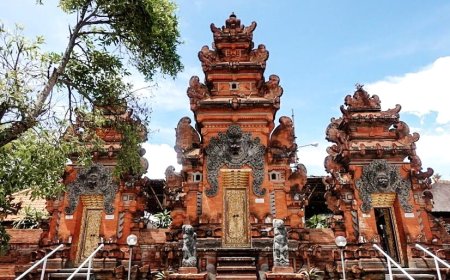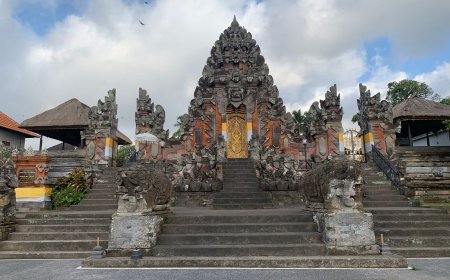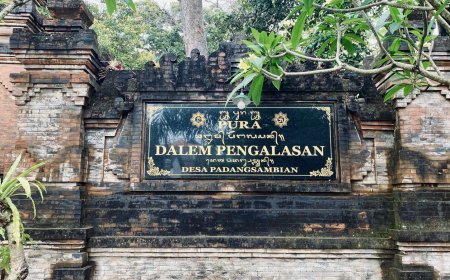Gelap Temple : Symbol of Universal Enlightenment
Pura Besakih is a temple complex located on the slopes of Mount Agung in the village of Besakih, Rendang District, Karangasem Regency, Bali. It is the most important spiritual center in Bali and is considered the 'Mother Temple' of the island. The Pura Besakih complex consists of the main temple called Pura Penataran Agung Besakih and 19 companion temples. However, within the context of Pura Besakih, there is one structure that not everyone may be aware of: Pura Gelap Besakih. The name 'Gelap' (which means 'dark' in Indonesian) may raise questions, but in reality, this building carries profound and meaningful significance.
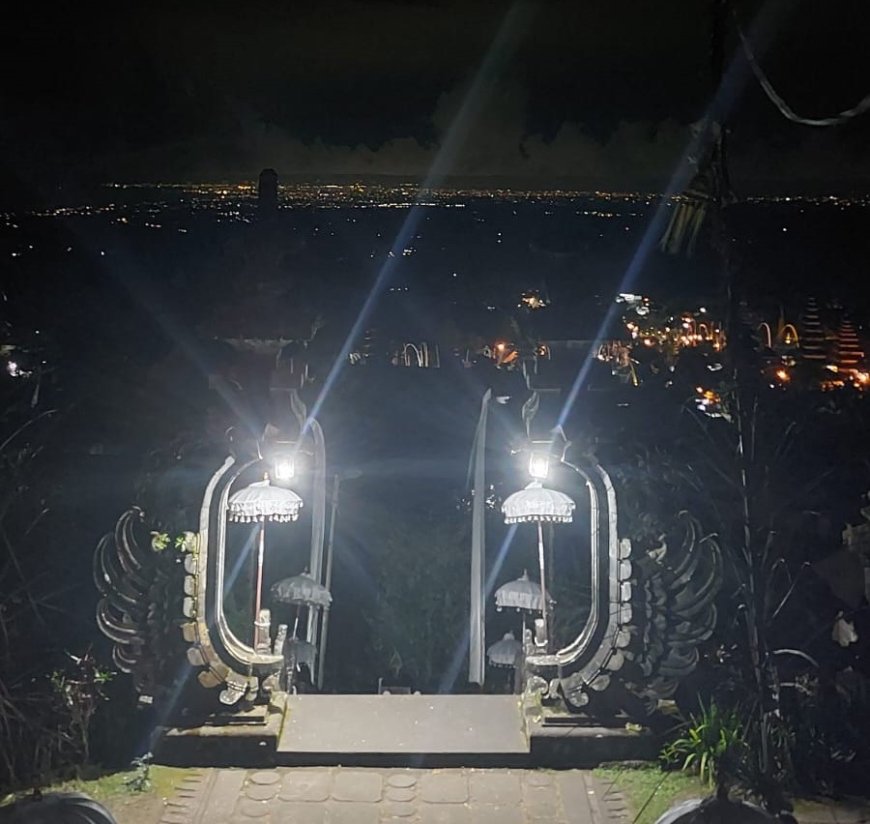
Bali is an island often referred to as the 'Island of a Thousand Temples.' This nickname signifies that every region in Bali has its own temple or 'pura.' Temples hold special significance for Hindus, particularly in Bali, as they serve as places of worship to connect with God or Ida Sang Hyang Widhi Wasa. One of the largest temple complexes in Bali is Pura Besakih.
Pura Besakih is a temple complex located on the slopes of Mount Agung in the village of Besakih, Rendang District, Karangasem Regency, Bali. It is the most important spiritual center in Bali and is considered the 'Mother Temple' of the island. The Pura Besakih complex consists of the main temple called Pura Penataran Agung Besakih and 19 companion temples. However, within the context of Pura Besakih, there is one structure that not everyone may be aware of: Pura Gelap Besakih. The name 'Gelap' (which means 'dark' in Indonesian) may raise questions, but in reality, this building carries profound and meaningful significance.
Pura Gelap is a part of the Pura Besakih complex and is located at the highest point among the sacred structures. To reach this temple, one must walk uphill for about 5 minutes from the right side of Pura Penataran Agung Besakih. The location of Pura Gelap, situated at the farthest end and highest position, allows visitors to witness the natural beauty below, including other temples within the Pura Besakih complex, with greater ease. The air is cool and the natural surroundings are peaceful, making it an ideal destination for spiritual tourism. The breathtaking natural scenery also appeals to tourists visiting the Pura Besakih temple complex.
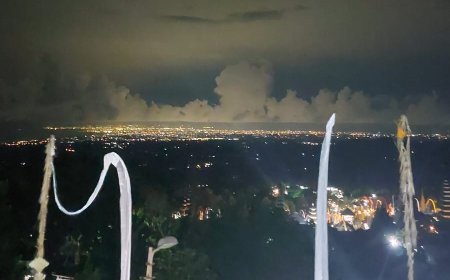
The Panorama of Gelap Temple (Photo Source : Author's Collection)
The name 'Pura Gelap' may be surprising to many, especially due to the negative connotations typically associated with the word 'gelap' (dark) in Indonesian. However, in the context of Pura Gelap Besakih, the term 'gelap' does not carry the same meaning as it does in everyday language. Here, 'gelap' refers to a deeper spiritual meaning. The name Pura Gelap is derived not because the place is dark without light or located in a cave, but quite the opposite—it is situated in an open area filled with light. The word 'gelap' itself originates from the Kawi language and means lightning or flash, signifying the source of illumination that radiates throughout the universe.
Pura Gelap, which is also one of the Pura Catur Lawa (four directional temples), represents Dewa Iswara and occupies the eastern (purwa) position, symbolized by the color white, which is also a symbol of light or the sun's rays that illuminate the universe or 'buwana agung,' keeping it free from darkness. Upon entering this temple area, the dominant color of the temple decorations (wastra) is white, in accordance with the symbolism of Pura Gelap.
The 'piodalan' or temple anniversary at Pura Gelap is held every six months on Soma Kliwon Wariga. Additionally, there is the 'Aci Pengenteg Jagat' ceremony, which occurs once a year during the full moon of Sasih Karo in Pura Gelap Besakih. This ceremony aims to seek the stability of the cosmic world or the universe, ensuring the well-being and prosperity of both humanity and the surrounding environment.

Meru Tumpang Tiga (Photo Source : Author's Collection)
The main shrine in Pura Gelap Besakih is the 'Meru Tumpang Tiga,' which serves as a means to worship Batara Iswara as the manifestation of the protecting deity in the eastern direction of the universe. Batara Iswara is also the deity of brightness and radiance in both 'Bhuwana Agung' and 'Bhuwana Alit.' The multi-tiered roof of the Meru symbolizes the embodiment of Dasaksara and signifies the essence of 'urip bhuwana' (life of the world). The embodiment of Dasaksara involves the syllable 'Om,' which can be expanded into three, five, seven, or even eleven syllables. Philosophically, they hold the same meaning. The symbolism and philosophical significance of Meru Tumpang Tiga are similar to Meru Tumpang Lima through Meru Tumpang Sebelas.
According to the Kekawin Dharma Sunia, Meru represents the symbol of the universe or 'Bhuwana stana Tuhan yang sesungguhnya' (the abode of the true God). Meru Tumpang Tiga in Pura Gelap represents the 'Tri Bhuwana,' namely Bhur, Bhuwah, and Swah Loka. This signifies that Batara Iswara, as the deity, enlightens life in these Tri Bhuwana. Inside Meru Tumpang Tiga, there is the sacred Lingga stone, the abode of Batara Siwa. Additionally, in Pura Gelap, there is the 'Pelinggih Sanggara Agung,' resembling Padmasana, which is used for consecrating 'tirtha' (holy water) taken from Pura Tirtha during important ceremonies at Pura Penataran Agung Besakih.
Pura Gelap also features the 'Pelinggih Dasar Sapta Patala,' a shrine used to worship the God as the soul of the lower world, consisting of seven layers known as 'Sapta Patala.' These elements of Sapta Patala function as intended only after receiving the light of the universe. The collaboration of these elements of nature generates the components of the world, leading to the existence of life on Earth.


















































